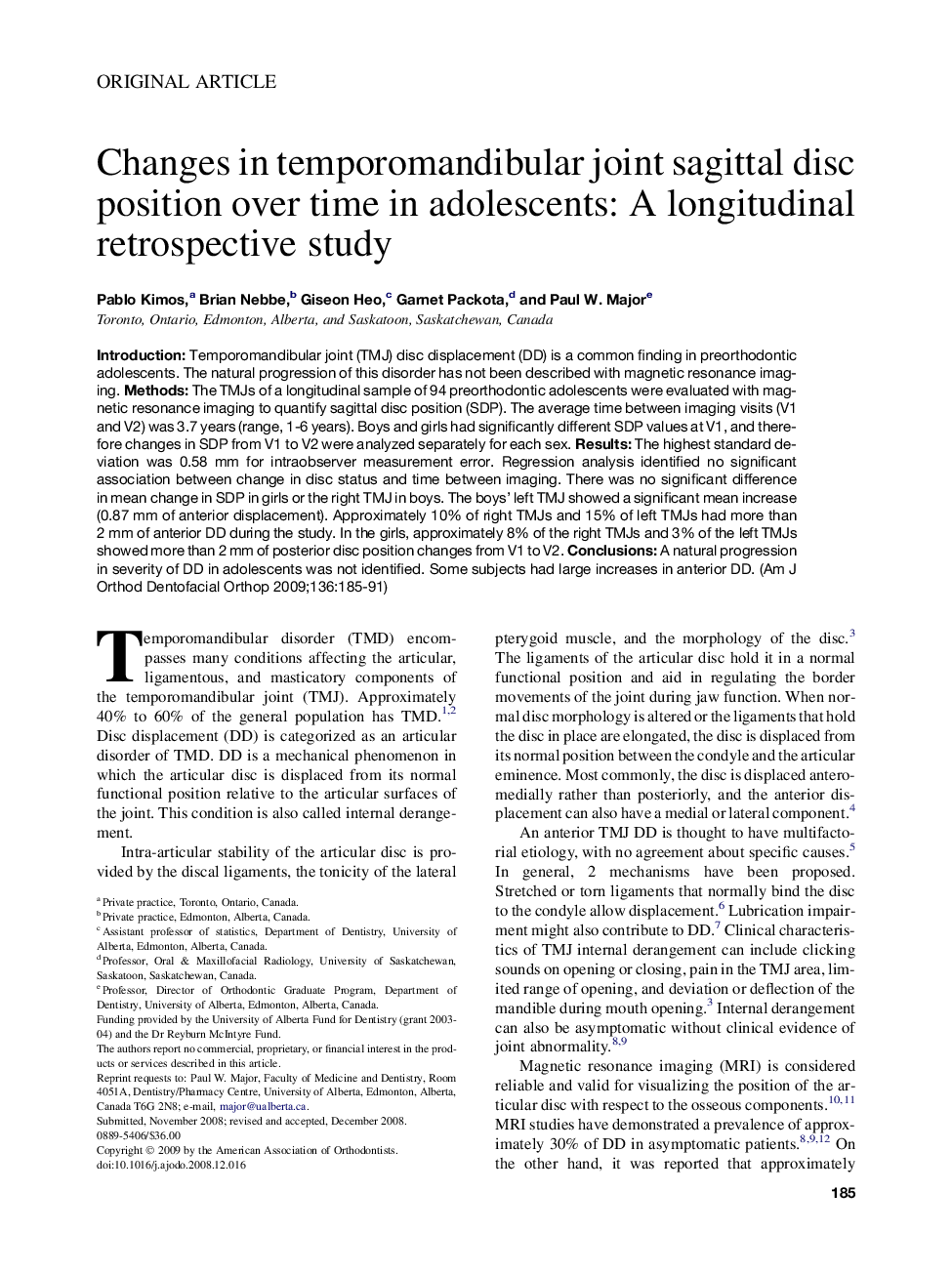| Article ID | Journal | Published Year | Pages | File Type |
|---|---|---|---|---|
| 3118843 | American Journal of Orthodontics and Dentofacial Orthopedics | 2009 | 7 Pages |
IntroductionTemporomandibular joint (TMJ) disc displacement (DD) is a common finding in preorthodontic adolescents. The natural progression of this disorder has not been described with magnetic resonance imaging.MethodsThe TMJs of a longitudinal sample of 94 preorthodontic adolescents were evaluated with magnetic resonance imaging to quantify sagittal disc position (SDP). The average time between imaging visits (V1 and V2) was 3.7 years (range, 1-6 years). Boys and girls had significantly different SDP values at V1, and therefore changes in SDP from V1 to V2 were analyzed separately for each sex.ResultsThe highest standard deviation was 0.58 mm for intraobserver measurement error. Regression analysis identified no significant association between change in disc status and time between imaging. There was no significant difference in mean change in SDP in girls or the right TMJ in boys. The boys' left TMJ showed a significant mean increase (0.87 mm of anterior displacement). Approximately 10% of right TMJs and 15% of left TMJs had more than 2 mm of anterior DD during the study. In the girls, approximately 8% of the right TMJs and 3% of the left TMJs showed more than 2 mm of posterior disc position changes from V1 to V2.ConclusionsA natural progression in severity of DD in adolescents was not identified. Some subjects had large increases in anterior DD.
